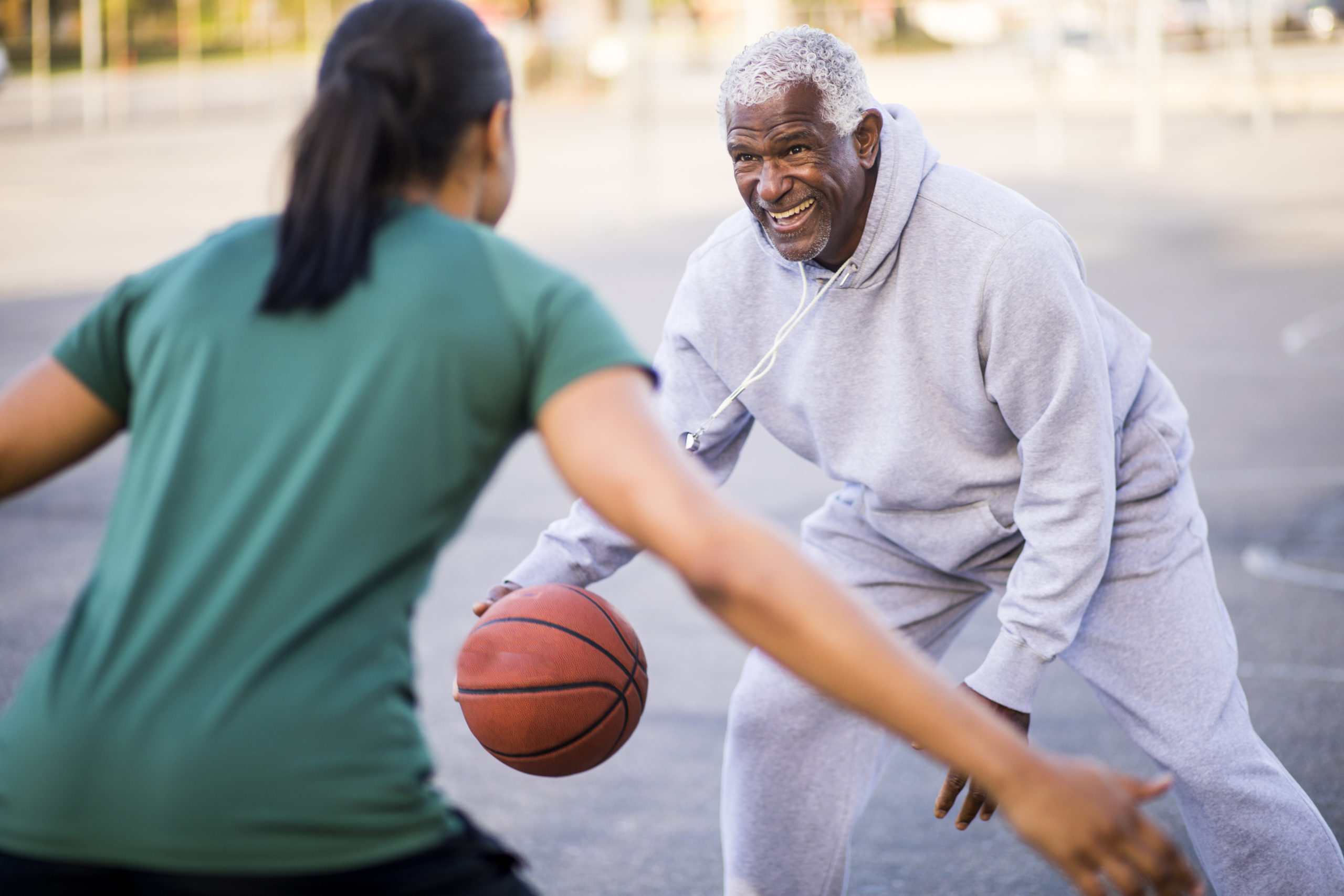Senior Fitness: Stay Active to Benefit Your Brain, Bones, and Balance

As we age, we tend to be less physically active. But, engaging in fitness or recreational activities that improve balance, flexibility, strength and endurance can enhance your quality of life and longevity well into your retirement years. Staying fit as a senior makes completing daily tasks easier and safer, which gives you more energy and independence.
Beyond age 65, you should modify your exercise routines, intensity, and focus to avoid injury and better serve your body’s changing needs and abilities. If it’s been a long time since you’ve regularly engaged in any type of sustained moderate-intensity activity, Dr. Thomas Best, a sports medicine physician with the University of Miami Sports Medicine Institute, says, “Don’t assume it’s too late or too challenging for you to become more active and improve your health.”
Benefits of exercising as you age
Strengthen muscles and bones: Regular exercise can help you maintain bone density, muscle mass, and strength.
Avoid falls: Doing balance and muscle-strengthening activities can help prevent osteoporosis and reduce your risk of falling.
Live better and longer: Staying fit can help control your weight, blood pressure and cholesterol. Studies show that regular physical activity can reduce your risk of dying early from heart disease/heart attack, some cancers and stroke.
Sharpen your brain function: Physical exercise releases chemicals that improve the structure and function of your brain, which enhances thinking, learning and judgment skills. Regular physical activity is also a preferred treatment for mental health conditions including anxiety and depression.
Improve Sexual Health: Regular exercise increases circulation and improves blood pressure, and may lower the risk of erectile dysfunction (ED). For those who have ED, becoming more physically fit may improve sexual function. Exercise may also increase sexual arousal in post-menopausal women.
Getting started
Before you start any new exercise routine or physical activity, it’s advised that you speak with your doctor to discuss any limitations based on your age, medical history or disabilities.
If you’re recovering from an injury or surgery or managing chronic pain, your doctor may refer you for physical or occupational therapy. Therapy can reduce inflammation and improve your circulation, strength, balance and range of motion through targeted, low-intensity movements and therapies. This can help you regain your ability to exercise and be more active long term.
“If you’re new to exercise,” Dr. Best says “start slowly to gradually build your strength, flexibility, balance and endurance.” Meet with a personal trainer or exercise scientist to ensure you’re using proper form to avoid injury, and create a tailored fitness plan tailored. A trainer or group exercise class can help you stay motivated, while exercising with a friend or family member can be a fun bonding activity.
Age-appropriate exercises
“Endurance training and strength training are both important aspects of overall health and longevity,” Dr. Best emphasizes.
Endurance or aerobic activities increase your heart rate and breathing. After six weeks of consistent aerobic exercise, working out and completing daily activities should feel easier and less physically taxing.
Examples include brisk walking, jogging, dancing, water aerobics, biking and tai chi.
Walking for just 5 to 10 minutes a few days a week is a great way to begin. Once you can comfortably walk for 30 consecutive minutes, you can try more challenging aerobic activities. For men and women age 65 and older, experts recommend at least 150 minutes of moderate-intensity aerobic activity or 75 minutes of vigorous-intensity aerobic activity every week.
Strength-training exercises make your muscles and bones stronger, which helps with activities like carrying groceries and lifting grandchildren.
Examples include weight lifting; resistance band exercises; lunges, squats and modified push-ups without weights.
Start by using one- to two-pound dumbbells. Using proper form, try to slowly complete 10 to 15 repetitions of bicep curls, triceps extensions and chest presses. Complete different strength-training activities each week to reach all of your major muscle groups.
Balance exercises help prevent falls. They improve your ability to walk on uneven pavement, sit down on a moving bus or airplane or stand up after sitting for longer periods of time.
Examples include yoga, tai chi and physical therapy movements for balance.
Flexibility exercises help release muscle tension, enable your body to stay limber and widen your range of motion. Stretching regularly can come in handy when you need to bend over to tie your shoes, reach for an object on a high shelf or twist to look back over your shoulder.
Examples include stretching, yoga and physical therapy movements for flexibility.
It’s best to stretch every day. Before you do, warm up for three to five minutes by walking or marching in place. Inhale then exhale as you slowly move your body into each pose. Hold it for at least 10 seconds. Don’t forget to continue breathing as you stretch.
If you feel sharp pain while stretching, or significant soreness the next day, you’re pushing into the stretches too far. You can also stretch after you finish strength or aerobic exercises.
To those who are hesitant to exercise as they age, Dr. Best says “Staying active or becoming active has many positive benefits for people of all ages, particularly those over 65.”
Dana Kantrowitz is a contributing writer for the UMiami Health News blog.
Medically reviewed and approved by Dr. Best in April 2023.
Tags: aging, Dr. Thomas Best, exercise for seniors, fitness, healthy lifestyle, seniors, tai chi, yoga
